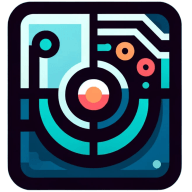9 Promising Emerging It Trends for Businesses in the Near Future
The business world is on the cusp of a technological revolution, with emerging IT trends poised to reshape operations across industries. Drawing on insights from leading experts, this article explores nine promising innovations that are set to make significant impacts in the near future. From AI-powered solutions to cloud-based systems, these advancements offer unprecedented opportunities for businesses to enhance efficiency, streamline processes, and gain competitive advantages.
- Cloud ERP Systems Enable Location-Independent Operations
- AIOps Streamlines IT Operations and Boosts Efficiency
- AI-Assisted Coding Accelerates Software Development
- AI Transforms Supply Chains and Democratizes Optimization
- Edge Computing Enhances Data Management and Recovery
- AI-Powered Logistics Automation Revolutionizes Service Industry
- No-Code Platforms Empower Non-Technical Teams
- AI Assists Healthcare Professionals in Patient Care
- Smart Contracts Build Trust at Code Speed
Cloud ERP Systems Enable Location-Independent Operations
For me, the most promising emerging IT trend for businesses is the shift toward fully integrated cloud-based ERP systems like NetSuite that enable truly location-independent operations. Once a business is liberated from physical infrastructure constraints, the evolutions in the speed, efficiency, and reliability of its processes are simply remarkable. Recently, we partnered with a company struggling with siloed information across multiple legacy systems. By implementing a comprehensive NetSuite solution, they went from having delayed weekly reports to accessing real-time operational insights from anywhere—empowering their leadership team to make critical decisions on the fly.
But that's just what's happening right now. The potential benefits of cloud-based ERP extend far beyond simple convenience. NetSuite's unified platform creates a single source of truth for all business data, eliminating the reconciliation headaches and inconsistencies that plague traditional systems. This integration delivers operational visibility that fundamentally changes how organizations function. I recall working with a professional services firm where project profitability remained a mystery until month-end closing. After our NetSuite implementation, project managers gained immediate visibility into resource utilization, expenses, and billable hours, allowing them to course-correct in real-time rather than discovering issues weeks later when opportunities for intervention had passed.
What truly distinguishes cloud ERP adoption as transformative is its scalability and adaptability to evolving business needs. I've seen countless companies hamstrung by rigid systems that required expensive customizations for even minor process changes. With NetSuite's cloud architecture, our clients can rapidly configure the system to support new business models, enter new markets, or integrate acquisitions without massive IT overhauls. And this agility doesn't just reduce IT costs; it fundamentally enables business strategy execution at a pace that wasn't previously possible.

AIOps Streamlines IT Operations and Boosts Efficiency
One emerging IT trend I'm particularly bullish on is AI-powered automation in IT operations—AIOps. We piloted a tool last year that uses machine learning to correlate log data, detect anomalies, and even auto-resolve low-level incidents. What used to take an engineer 45 minutes to triage now gets flagged and fixed in under five minutes. The first time it auto-remediated a disk space issue before anyone noticed, our helpdesk team cheered. It was like having another full-time engineer who never sleeps.
The potential benefit is massive, especially for mid-sized businesses trying to do more with lean teams. AIOps doesn't replace your people; it frees them from the noise so they can focus on higher-impact work. It also provides you with earlier visibility into issues that could impact customer experience or security. We're just scratching the surface, but this kind of automation will be a game-changer in keeping systems healthy and teams focused.
AI-Assisted Coding Accelerates Software Development
One emerging IT trend that I find especially promising is AI-assisted software development, particularly tools like GitHub Copilot. I was initially skeptical, but after observing one of our mid-level engineers reduce development time by half on a routine API integration, I was convinced. It not only accelerated the work but also enhanced its quality. The AI identified edge cases and suggested improved naming conventions, resulting in a cleaner and more maintainable codebase. For businesses, this translates into faster time-to-market and reduced technical debt, which is significant.
The greater opportunity lies in how these tools level the playing field. Junior developers can progress more rapidly and contribute meaningfully earlier in their careers. This is not just a productivity gain—it's a talent strategy. In competitive hiring markets, the ability to onboard and empower talent quickly is invaluable. I anticipate AI coding assistants becoming standard tools, much like version control or CI/CD pipelines. They won't replace engineers—instead, they will make them more efficient, faster, and more focused on solving business problems rather than writing boilerplate code.

AI Transforms Supply Chains and Democratizes Optimization
As we navigate the ever-evolving landscape of commerce, I see artificial intelligence and machine learning as the most transformative IT trends for businesses today. What makes AI particularly promising is its ability to turn massive datasets into actionable intelligence that drives better decision-making across entire organizations.
In the logistics and fulfillment world, we're already witnessing this revolution firsthand. When I started Fulfill.com, I recognized that most businesses were making crucial 3PL partnership decisions based on gut feelings or limited information. Today, AI algorithms can analyze thousands of variables across inventory patterns, shipping requirements, and consumer behavior to create truly optimized supply chains.
The potential benefits are substantial. First, there's the predictive advantage – businesses that leverage AI can anticipate disruptions before they occur, something I wish I'd had during my early days running a fulfillment operation out of a converted morgue (yes, that actually happened!). Second, there's the efficiency factor – we're seeing companies reduce picking errors by over 30% with AI-powered warehouse management systems.
What excites me most, though, is democratization. Previously, sophisticated supply chain optimization was exclusive to enterprise-level companies with massive IT budgets. Now, even small and mid-sized eCommerce brands can access AI-powered tools that level the playing field.
The businesses that will thrive aren't necessarily those with the biggest budgets, but those most willing to embrace these new technologies and adapt their operations accordingly. My advice? Start small with focused AI implementations that address specific pain points, measure the results rigorously, and scale what works. The competitive advantage gained will be worth every bit of the learning curve.
Edge Computing Enhances Data Management and Recovery
I see edge computing as the most promising emerging IT trend for businesses, particularly from a data management and recovery perspective.
Edge computing brings data processing closer to where it's generated - whether that's IoT devices, retail locations, or manufacturing facilities. This shift creates tremendous opportunities but also new data protection challenges that smart businesses are already preparing for.
The key benefits I foresee:
Reduced latency and improved performance - By processing data locally, businesses can achieve real-time decision making that wasn't possible when everything had to travel to centralized cloud servers. This is game-changing for industries like autonomous vehicles, financial trading, and healthcare monitoring.
Enhanced data sovereignty and compliance - With regulations like GDPR requiring data localization, edge computing allows businesses to keep sensitive data within specific geographic boundaries while still leveraging advanced analytics.
Improved resilience and business continuity - Distributed processing means that if one node fails, others can continue operating. However, this also means businesses need more sophisticated data backup and recovery strategies across multiple edge locations.
From my experience in data recovery, I'm seeing forward-thinking companies already implementing robust backup protocols for their edge infrastructure. The businesses that will thrive are those building data protection into their edge strategy from day one, rather than treating it as an afterthought.
The convergence of 5G networks with edge computing will accelerate this trend significantly over the next 2-3 years, making it essential for businesses to start planning their edge data management strategies now.

AI-Powered Logistics Automation Revolutionizes Service Industry
The most promising IT trend I'm seeing? AI-powered logistics automation—and we're living proof it works.
At Mexico-City-Private-Driver.com, what started as a small team of professional chauffeurs evolved into a tech-enabled operation once I integrated AI into our WhatsApp booking flow. That decision alone reduced manual coordination time by 70%, allowing us to instantly match drivers to passengers based on proximity, luggage needs, and even hotel preferences like the St. Regis or JW Marriott.
But the real breakthrough? Predictive analytics. By analyzing thousands of past airport transfer routes, we now forecast traffic bottlenecks and ETA accuracy with over 90% reliability. This gave us an edge with business travelers who can't afford to be late—and our repeat booking rate jumped by 34% in just 6 months.
The emerging IT trend isn't just about flashy tools. It's about hyper-personalized, intelligent services that operate quietly in the background. For small service businesses like mine, it means scaling quality without adding overhead. That's the future: automation with a human face.
No-Code Platforms Empower Non-Technical Teams
One of the most promising emerging IT trends for businesses in the near future is the rise of AI-driven process automation, particularly through no-code/low-code platforms and intelligent workflow tools like n8n, Make (Integromat), and AI copilots embedded in business software.
Why This Trend Stands Out
Unlike traditional automation, which often required IT teams or developers, modern tools are allowing non-technical teams—marketers, sales, HR, and ops—to build their own workflows and automations. When combined with generative AI, the power of these platforms becomes exponential.
For example, we've used n8n + GPT-based tools to automate:
• Lead enrichment from incoming forms
• Real-time sales alerts to Slack/CRM
• Generation of personalized email follow-ups based on form responses
• Visual mockup creation for ad proposals using AI image tools
These kinds of automations used to take hours or days to set up, and now they can be done in minutes with minimal code.
Potential Benefits for Businesses
• Cost savings: Fewer manual tasks, fewer hours spent on repetitive work
• Speed and agility: Teams can launch experiments or internal tools faster without bottlenecks
• Democratization of IT: Business users can create solutions without waiting for dev cycles
• Improved accuracy and consistency: AI ensures data is cleaned, tagged, and routed properly every time
• Scalable personalization: From custom customer journeys to internal reporting dashboards

AI Assists Healthcare Professionals in Patient Care
People are probably tired of hearing this, but AI is definitely where it's at lately, and it's going to scale even more in the coming months or years. As with any new technology, there are major and minor pros and cons to any emerging technology, especially one as advanced as artificial intelligence. However, zooming into healthcare and healthtech specifically, since it's our line of work at Carepatron, we strongly believe that while AI has the power to shift the gears in these adjacent industries, nothing can still beat the power of human-centered care.
That's why we look at AI as assistive tools rather than replacements for health professionals. AI can alleviate some of the manual admin work that would allow professionals to focus more time on proper and more empathic patient care, which is the heart of this industry. In fact, it's something we're already implementing at Carepatron, resulting in tons of hours saved for the teams we're helping, allowing them to focus more on engaging with their clients than experiencing burnout due to admin tasks.
Taking this burden off of practitioners, especially when we take it at scale, will surely make a difference in allowing a better relationship between clinicians and patients. Healthcare doesn't need to be scary if we remember humanity at the heart of it and, ironically, AI can help make that happen if only we utilize it the way we're trying to.

Smart Contracts Build Trust at Code Speed
Blockchain's flashy cousin, the smart contract, is quietly reshaping how businesses build trust. No more invoice ping-pong or "we'll pay you next week" drama; agreements execute automatically when conditions are met. In industries like insurance, supply chain, and even HR onboarding, this trend turns red tape into clean code. The benefit? Trust at the speed of code. Less waiting, less chasing, more doing.





